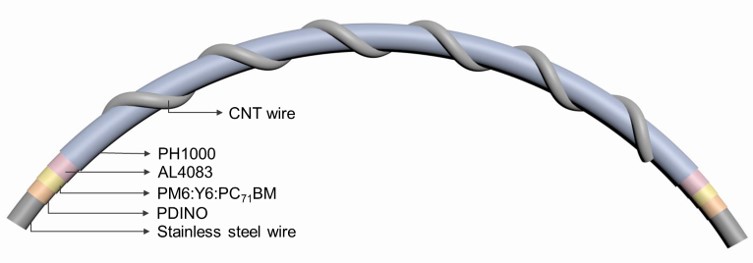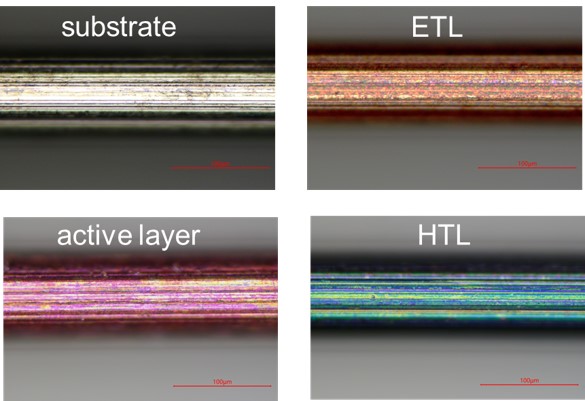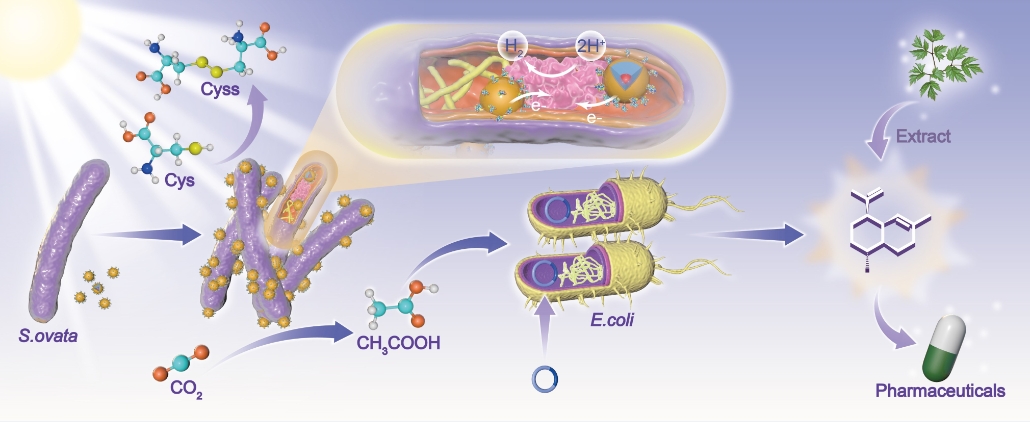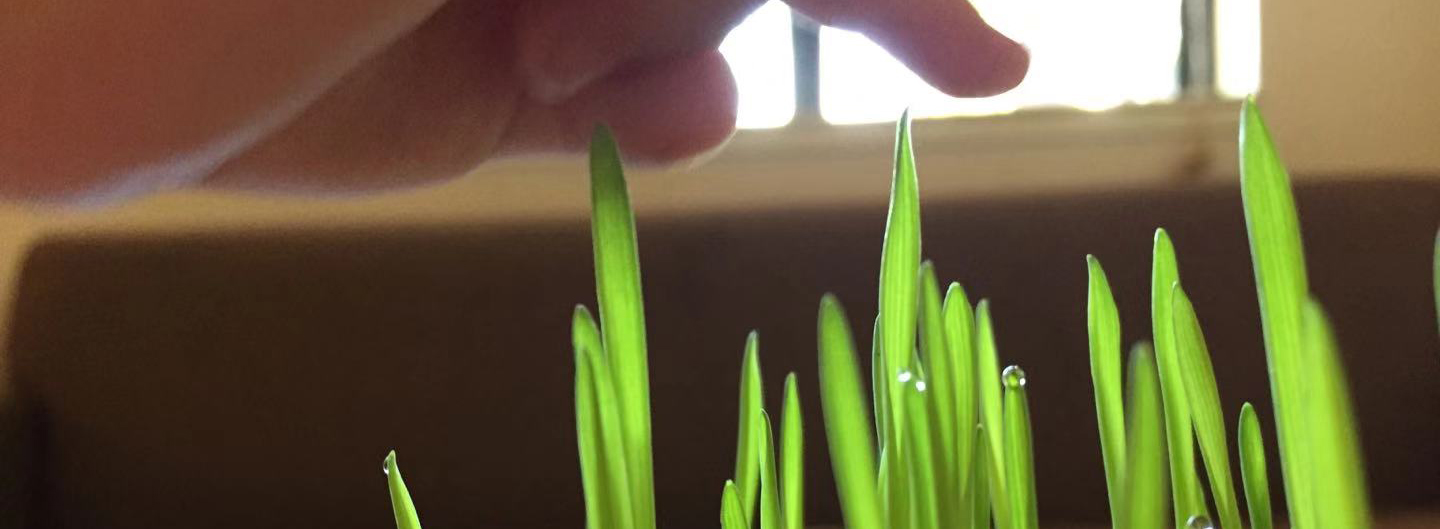Transparent Solar Cells
Transparent photovoltaic (TPV) is a unique technology for the utilizing of sunlight. It can not only convert the light to electricity but also provide a bright natural light environment. The unique advantages of the TPV offer great potential for applications in smart windows on buildings, vehicles, and greenhouses. On one hand, the TPV is an effective approach to generate electrical power. Assuming a TPV module power efficiency of 10%, the total potential of TPV-based windows is conservatively estimated as 8000 TWh/yr (0.9 TW), or nearly 10% of the total electricity generation of China. On another hand, the TPV can provide an ideal choice to meet the aesthetic demands in the invisible self-powered devices.

Our research is focusing on the development of highly transparent efficient TPVs. By balancing efficiency and transparency, the average visible transmission (AVT) can achieve up to 85% which exceeds the transparency of the double-glazed glass in the buildings. Meanwhile, the power conversion efficiency (PCE) can achieve over 5% (the theoretical value is ~ 11% when considering all reasonable optical losses). The flexible property of the devices is also be considered in the research.
Reference:
1. npj Flexible Electronics, 2022, 6, 39.
2. J. Mater. Chem. A, 2023, 11, 26212 - 26220.
Fiber Solar Cells
 
Fiber-shaped solar cells (FSCs) are good candidates to act as the power source of wearable electronics. However, the development of FOSCs is seriously lagging behind other types of FSCs. We demonstrate the efficient FOSCs with non-fullerene-acceptors (NFAs)-based light-harvesting materials. The FOSCs present efficiencies exceeding 9% under AM 1.5G irradiation conditions. The FOSCs can drive the electrical devices and be woven into the textile to charge the smartwatch. The study exhibits great potential to apply the FOSCs as the power supply source in the wearable electronic field.

The high flexibility and stretchability enable the device to fit the body and avoid performance loss when the device deforms with irregular body movements. The reported FOSCs with the metal wire-based core electrode exhibit ideal flexibility. However, due to the lack of stretchable fiber electrodes, the FOSCs with the merit of intrinsic stretchability are rarely reported. We demonstrate the intrinsically stretchable fiber electrode with robust stretchability and high conductivity for stretchable FOSCs. With the stretchable core electrode, the fabricated FOSCs show superior intrinsic stretchability, remaining more than 90% of the initial efficiency under the stretch strain within 30%. When the stretch strain is released, the device can almost regain 100% of its initial performance. The device’s performance remains stable even after undergoing hundreds of stretching-releasing cycles.
Polymerized non-fullerene acceptors with excellent photovoltaic performance are a promising strategy for preparing stretchable semiconductors and photovoltaics. Here, an efficient polymer-based bulk-heterojunction blend was adopted as the photoactive material of the stretchable all-polymer FOSCs. The fabricated all-polymer FOSCs show superior intrinsic stretchability that remains more than 90% of the initial efficiency under the stretch strain of 50% and maintains stable performance even when undergoing hundreds of stretching-releasing cycles. By adding the third component of SEBS elastomer, the stretchable all-polymer FOSCs can endure the ultrahigh stretch strains over 80%.
Reference:
1. npj Flexible Electronics, 2022, 6, 38.
2. Solar RRL, 2023, 7, 2300234.
3. Solar RRL, 2023, 7, 2300699.
Transparent Photodetectors

Wavelength recognition is one of the important functions of photodetectors. However, wavelength recognition of the reported photodetectors is generally dependent on light intensity, which limits the practical applications. Here, we report a light intensity-independent wavelength recognition scheme based on vertically stacked transparent photodetectors. By analyzing light intensity attenuation behavior of the multiple stacked photodetectors, wavelength of incident light can be accurately determined. Due to high transparency of the detectors, multiple stacked detectors allow incident light to pass through. Meanwhile, since the attenuation coefficients at different wavelengths are attributed to the detector’s absorption characteristics, the intensity of incident light and its wavelength can be determined by analyzing the attenuation coefficients measured through each stacked detector.
Reference:
1. Small, 2023, 202305973.
Artificial Photosynthesis

The artificial photosynthesis system based on semiconductor-non-photosynthetic bacteria has great application potential in water splitting, carbon dioxide fixation, and biosynthesis since this hybrid system has both natural photosynthesis's self-reproduction and regeneration characteristics and the broad absorption spectrum of artificially synthesized semiconductor materials. Currently, most of the reported semiconductor-non-photosynthetic bacteria artificial photosynthesis systems combine extracellular semiconductor materials with the surface of bacteria. The photogenerated electrons from the semiconductor materials must pass across the cell membrane to activate the hydrogenase inside the cell. Active sites with hydrogenase enable the conversion of carbon dioxide to multi-carbon products.

We synthesized InP quantum dots with low biological toxicity, obtained hydrophilic quantum dots through ligand exchange, and then transferred them into the cells of non-photosynthetic bacteria. We found that the hybrid artificial photosynthesis system based on InP quantum dots-non-photosynthetic bacteria hybrid system can efficiently convert carbon dioxide into acetate. The intracellular direct transfer of photogenerated electrons reduces energy consumption across the cell membrane, which is essential to improving the light utilization efficiency of the artificial photosynthesis system.
Reference:
1. Nanotoday, 2022, 47, 101681.
|

